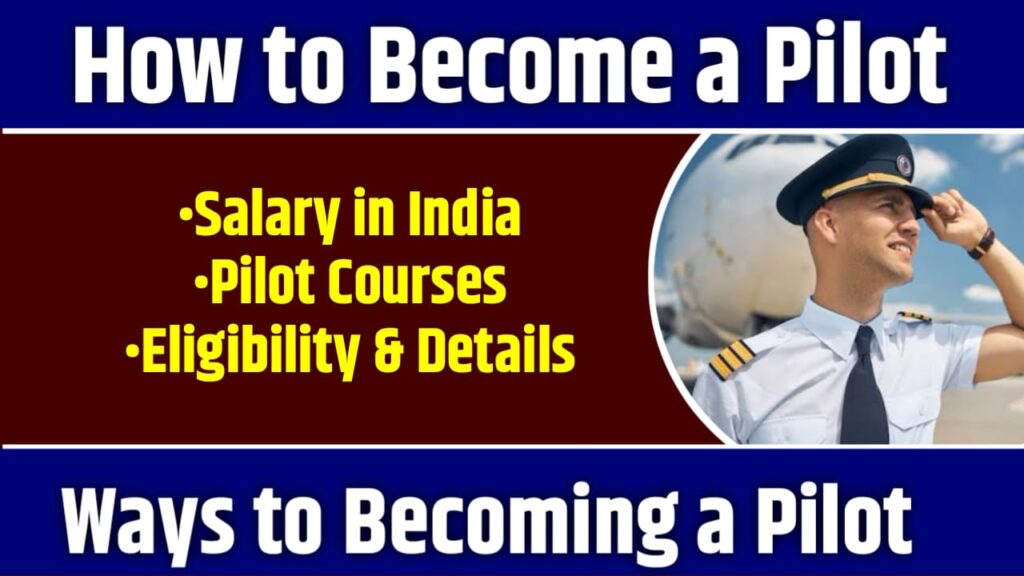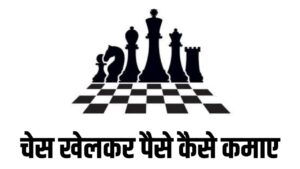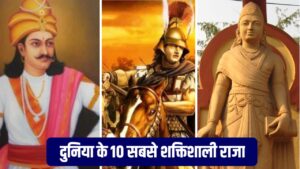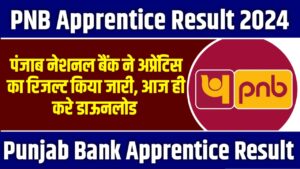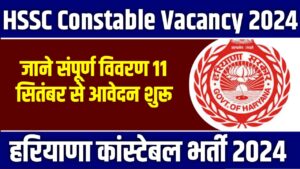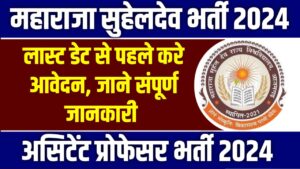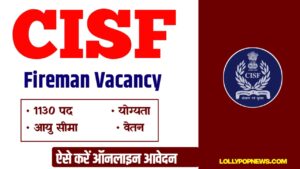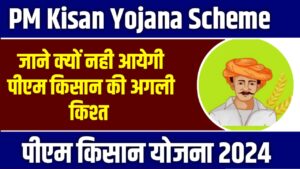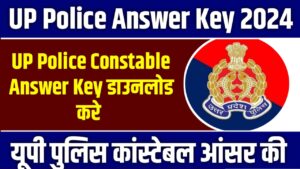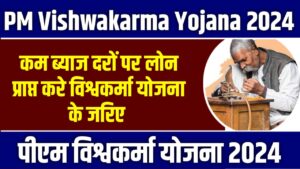How to Become a Pilot after 12th in India 2024: Many students in India dream of becoming a pilot only after completing 12th class, everyone’s dream is to fly a plane. In such a situation, if you are also thinking about How to Become a pilot after 12th, then you should read this article completely, that too without skipping. There are many ways to become a pilot, such as becoming a commercial pilot, becoming a pilot in the Indian Air Force, or starting as a private pilot. For students who ask How to Become a pilot after 10th, it is important to complete their 12th class with physics and mathematics. Aspiring pilots often also ask what is the cost to become a pilot, so tell them that the cost of becoming a pilot can vary considerably depending on the training institute and the type of license.
For women who wish to become pilots, the question of how to become a pilot after 12th in India is attracting attention, as more women in modern India are becoming pilots and making a name in this field. Understanding how to become a commercial pilot involves obtaining a Commercial Pilot License (CPL), which requires extensive training and passing various exams. Another common question is regarding the Salary of Pilot in India, which can range from moderate to highly lucrative, especially in commercial aviation. This article will help you understand each step involved in becoming a pilot after 12th in India and achieving your aviation dreams.
How to Become a Pilot after 12th
Becoming a pilot after completing your 12th grade is an exciting journey that requires dedication, training, and meeting specific eligibility criteria. Here is a detailed step-by-step guide on how to become a pilot after 12th in India:
1. Meet Eligibility Requirements
- Educational Qualification: You must have completed 12th grade with Physics, Mathematics, and English.
- Age: Minimum age is 17 years to start pilot training.
- Medical Fitness: Obtain a Class 1 Medical Certificate from DGCA-approved doctors to ensure you meet the required health standards.
2. Select the Type of Pilot License
- Student Pilot License (SPL): The initial step, usually obtained during training.
- Private Pilot License (PPL): For those who want to fly non-commercially.
- Commercial Pilot License (CPL): The most sought-after license to become a commercial pilot.
3. Enroll in a Flying School
- Choose a DGCA-approved flying school in India or abroad. Some popular Indian flying schools include Indira Gandhi Rashtriya Uran Akademi (IGRUA), CAE Oxford, and Bombay Flying Club.
4. Clear Entrance Exams
- Some flying schools conduct entrance exams like written tests, interviews, and aptitude tests.
5. Complete Ground Training and Flying Hours
- Ground training covers aviation subjects like Air Navigation, Meteorology, and Air Regulations.
- Complete required flying hours (200 hours for CPL) under the supervision of a certified instructor.
Different Types of Pilots in India
Understanding the different types of pilots in India helps clarify your future career path in aviation. Here are the main types:
- Commercial Pilots: Operate flights for airlines, transporting passengers and cargo both domestically and internationally. They require a Commercial Pilot License (CPL).
- Airline Transport Pilots: Command large commercial aircraft and are the most experienced pilots. They must hold an Airline Transport Pilot License (ATPL), the highest certification level.
- Cargo Pilots: Specialize in transporting goods rather than passengers. Often working for courier companies, they frequently operate flights at night.
- Military Pilots: Serve in the Indian Air Force, flying fighter jets, transport aircraft, or helicopters. Their training is tailored to military requirements.
- Helicopter Pilots: Operate helicopters across various sectors, including tourism, rescue operations, and oil and gas exploration.
Read Also:
- Government Schemes for Students in India 2024 Apply Now
- 50 passive income ideas for Indians (Guide 2024)
How to Become a Pilot in India
Becoming a pilot in India is a rigorous yet fulfilling journey. It requires dedication, rigorous training, and a significant investment of time and resources. Here’s a detailed guide to help you understand the process of becoming a pilot in India:
1. Clear the Educational Eligibility
The journey to becoming a pilot begins with meeting the educational prerequisites. Candidates must:
- Complete 10+2 Education: A high school education with a focus on Physics and Mathematics is essential.
- Foundation for Pilot Training: These subjects provide the necessary foundation for the technical aspects of pilot training.
2. Meet Medical Fitness Standards
A crucial step in becoming a pilot is ensuring you meet the medical requirements set by the Directorate General of Civil Aviation (DGCA). This includes:
- Medical Examination: Candidates must pass a medical exam that evaluates eyesight, physical fitness, and overall health.
- DGCA Standards: For detailed medical requirements, visit the official DGCA website.
3. Pass the Entrance Exam
The next step involves clearing an entrance exam conducted by various flying schools. The exam typically tests:
- Aptitude and Knowledge: The candidate’s understanding of Physics, Mathematics, and general aptitude for aviation.
4. Enroll in Pilot Training
Upon passing the entrance exam, candidates must undergo formal pilot training at a DGCA-approved flying school. This training consists of:
- Ground School Classes: Theoretical instruction on aviation principles, navigation, meteorology, and more.
- Flying Hours: Practical flying hours under the supervision of certified instructors.
5. Obtain a Private Pilot License (PPL)
After completing the initial training, candidates can apply for a Private Pilot License. Requirements include:
- Flight Hours: A minimum of 40 flying hours, with at least 20 hours solo flight time.
- Purpose of PPL: This license allows for flying privately, often for leisure or personal use.
6. Achieve a Commercial Pilot License (CPL)
To pursue a career as a professional pilot, candidates must obtain a Commercial Pilot License. Requirements include:
- Flight Hours: A minimum of 200 hours of flight time, or 150 hours if trained at a DGCA-approved institute.
- Commercial Training: Specialized training for commercial operations.
7. Obtain Instrument Rating and Endorsement
To enhance qualifications, pilots need to secure:
- Instrument Rating: Allows flying in poor visibility conditions by relying on instruments.
- Type Endorsement: Certifies the pilot to operate specific types of aircraft.
8. Acquire an Airline Transport Pilot License (ATPL)
The ATPL is the highest level of pilot certification. Requirements include:
- Flight Experience: A minimum of 1500 hours of total flight experience.
- Advanced Training: Further training to handle complex airline operations.
Pilot Courses in India
Pilot Courses in India offer a structured pathway for those aspiring to take to the skies. From certificate programs to undergraduate and postgraduate degrees, these courses provide the essential training and skills required to become a pilot. Here’s an overview of the various pilot courses in India and how they help you achieve your dream of becoming a pilot after 12th.
Certificate Pilot Courses
Certificate courses are a great starting point for students who wish to gain basic knowledge about aviation. These courses provide foundational skills that are crucial for aspiring pilots. Some of the top certificate courses include:
- Aviation: Aircraft Ground Support Equipment
- Aviation: Airline Customer Service
- Cabin Crew Training
- Security Operations, Processes & Strategies in Aviation
These short-term courses offer insights into the aviation industry and can be an entry point for those exploring how to become a pilot after 12th.
Undergraduate Pilot Courses
- B. Tech (Bachelor of Technology) Aeronautical Engineering
- B. Tech (Bachelor of Technology) Avionics Engineering
- B.E. (Bachelor of Engineering) Aeronautical Engineering
- B.E. (Bachelor of Engineering) Aerospace Engineering
- B.Sc. (Bachelor of Science) Aeronautical Science
- B.Sc. (Bachelor of Science) Aviation
- BBA Airport Management
- BBA Aviation Operations
- BMS in Aviation Management
For those wondering how to become a pilot after 12th, enrolling in undergraduate courses is a key step. These programs equip students with the technical knowledge required to become a pilot. Popular undergraduate courses include:
- B.Tech in Aeronautical Operations
Postgraduate Pilot Courses
Postgraduate courses further specialize the knowledge gained in undergraduate studies. They are ideal for those looking to enhance their skills and pursue advanced aviation careers. Notable postgraduate programs include:
- M.E. (Master of Engineering) Aeronautical Engineering
- M.E. (Master of Engineering) Aerospace Engineering
- M.Sc. (Master of Science) Aeronautical Science
- M.Sc. (Master of Science) Aerospace Engineering
- M.Tech. (Master of Technology) Aeronautical Engineering
- M.Tech. (Master of Technology) Aerospace Engineering
- M.Tech. (Master of Technology) Avionics Engineering
- MBA in Aviation
- MSc in Aviation
Salary of Pilot in India
The salary of a pilot in India varies significantly depending on factors such as experience, the airline they work for, and their location. On average, pilots earn between ₹1 lakh to ₹4 lakhs per month as a base salary. However, with additional cash benefits and allowances, the salary of a pilot in India can reach up to an impressive ₹8,77,056 per month.
Different airlines offer varied pay scales; for example, IndiGo pays its pilots around ₹2,93,676 monthly, while AirAsia offers a higher average of about ₹4,01,107. The salary of a pilot in India also increases with experience and rank, with senior pilots earning significantly more than their junior counterparts. Overall, being a pilot is a well-paying profession in India, offering excellent financial rewards and career growth opportunities.
Top Flying Schools in India
| Top Flying Schools in India | Pilot Training Fees |
| Indian Institute of Aeronautics | Rs. 1.70 lakh |
| The Bombay Flying Club (BFC) | Rs. 10 lakhs |
| Indian Institute of Engineering and Aeronautics | Rs. 12 lakhs |
| Ahmedabad Aviation and Aeronautics | Rs. 20 lakhs |
| Wingsss College of Aviation and Technology | Rs. 23 lakhs |
| Hindustan Aviation Academy | Rs. 4 lakhs |
| Indira Gandhi Rashtriya Uran Academy | Rs. 42 lakhs |
| National Flight Training Institute | Rs. 50.05 lakh |
Conclusion
How to Become a Pilot after 12th is a journey that combines dedication, rigorous training, and strategic career choices. From meeting the educational requirements to selecting the right pilot license, each step is crucial for aspiring pilots. The cost to become a pilot can vary widely depending on the training institution and the type of license pursued, making financial planning an important aspect of this career path. Understanding how to become a commercial pilot involves obtaining the necessary licenses, completing flying hours, and undergoing advanced training. With competitive compensation packages, the Salary of Pilot in India reflects the skill, responsibility, and experience that come with this prestigious profession, making it an attractive career choice for many.


